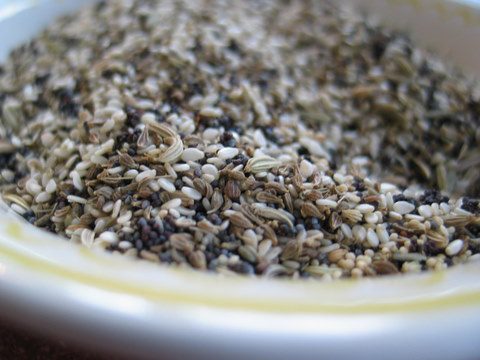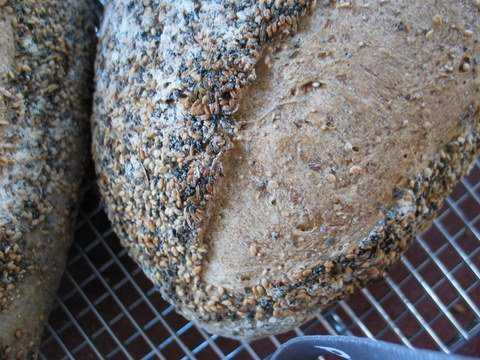So after the dinner we retired to the lounge for a devotional and then a movie.
Oh-woman-of-nine-children led the devotional which was pleasant and even somewhat inspirational (this is high praise since modern day devotionals tend to make me angry rather than inspired). She shared her story, how she was a single mother and then got married and had stair-step children (as in one per year). She told of some debilitating illnesses she had experienced (such as one with the quaint name of, get this, “flesh-eating septicemia”) and how she and her husband had come to the decision to be foster parents. I didn’t agree with everything she said, but I appreciated where she was coming from. I respected her.
But things went downhill when they got the movie out. Oh-woman-of-nine-children was totally thrilled to be showing us the movie. She kept saying that she couldn’t believe that no one had ever taught her this stuff—she had seen the movie for the first time just a couple months before. “We need to be teaching this to our daughters!” she trilled. So all the kitchen staff daughters joined us for the movie and the ensuing conversation.
I can not imagine, ever, showing that movie to my daughters.
I don’t remember what the video was called, but it was from the camp of Women Against Feminism and it consisted of two young women, beautiful and stunningly intelligent sisters in their early twenties, speaking at a father-daughter conference about why feminism was wrong and the importance of the father-daughter relationship. I agreed with a part of what they said, I disagreed with another part, and I was sickened by yet another part. I don’t want to go into all the gory details, yet (I feel a Part Three coming on), so this is what I will give you.
They believe that:
1. Females are to be under the covering of a man at all times—first their father’s, and then once they get married, their husband’s.
2. Everything women do is to glorify their fathers/husbands. They are to carry out the vision that the men have. The women may do many different jobs/occupations, but whatever they do needs to further their father’s/husband’s mission.
3. Women are to be selfless in all ways, gentle, listening, humble, intelligent, courteous, etc. They are also to take good care of their appearance so they are pleasing to look upon and bring honor to their husbands and fathers.
4. They are to fully support their husbands and fathers, never questioning and challenging, but always helping them obediently.
5. And so on.
A discussion time followed the movie. One military wife shared about how in six years of military service she had acquired more medals than her husband had in twelve. She realized this (her success) was hurting him and so she left the military and thus saved her marriage. The ex-military woman said that her mother was a feminist who criticized her husband in front of the ex-military woman. This made Ex-Military Woman sad and upset and she vowed to not talk negatively about her husband in the presence of her children.
(It is never right to disrespect another person. I did not realize that “feminism” equaled “disrespect for men”. In fact, according to my dictionary [and maybe my dictionary is outdated?] feminism means that men and women are equal. And the word “feminism” also refers to the organized activity surrounding the interests of females.
So then, by that definition, those young women in the movie were feminists. They said, at one point in their lecture, that their mother was not superior to, but also not inferior to, their father. In other words, equal. [They just had different roles, no?] And they were speaking on behalf of an organization that focuses on the interests of females in a way that they believe makes women more fulfilled and whole.
“Feminism” has taken on so many connotations that it may be hard to get to the root of the word, but from what I gathered, the speakers were equating “feminism” with the women’s liberation movement, and from what I’ve heard, some of those women in that movement were downright hateful and disrespectful to men. And like I said, it is never okay to be disrespectful and hateful to another human being. Ever.
Maybe it would be more accurate for the women in the video to refer to their activity and organization as “Feminists Who Love Men”?)
Another woman said that when she and her husband were first married and both working, she had been bringing home more money than he had. She felt bad about this and apologized to him. He laughed, “Honey, it don’t bother me none. Keep it comin’!” She told us, “Now, eighteen years later, we are no long in the same place as we were then, praise the Lord. It has taken some adjusting for us to get to this place, but now my husband agrees it is for the best.”
(Wait a minute. But who led you to make that change? Your husband liked it the way things were, so did you force him to change? Were you, a mere woman, in charge of that decision?)
The same woman later said that when she “comes before her husband—”
(Eek! Does her living room sport a throne? The only throne in my house is the white enamel kind.)
—with a question, she words it very carefully because she doesn’t want to sway her husband either way since it is very important for him to make is own decisions.
(First of all, if I want to talk to my hubby I’m more likely to squawk, “Ho-o-o-ney, get your tight little hiney in here! I gots something I wants to say to you!”
And second, are men such weak and fragile little creatures that we must tiptoe around them? That they can’t handle a different perspective? That they must be pandered to and babied like a six month old? No-no-no. I respect men way too much for that. Yes, they need to be built up and encouraged and loved and respected. We all do. But I respect men too much to tiptoe around them—they are real, solid, strong people who are big enough to handle differing ideas and opinions without wilting. At least I thought they were.)
I badly wanted to join the conversation to state my observation that it seemed they were painting men as weak creatures, in dire need of our female protection; that the way they were talking it seemed like they thought women were more powerful than men; that I thought men were much stronger than they were making them out to be.
But I didn’t say anything. These women were sincere, good women. We had just had wonderful pre-devotional conversation, and as a result I respected them and cared enough about them that I didn’t want to say anything to upset them. This was a time for them to be recharged and encouraged, and it wasn’t my place, nor would it have been appropriate, to antagonize them. So I kept my words to myself.
Until the next morning when I lectured Mr. Handsome for over an hour about the kind of wife that he was supposed to have.










